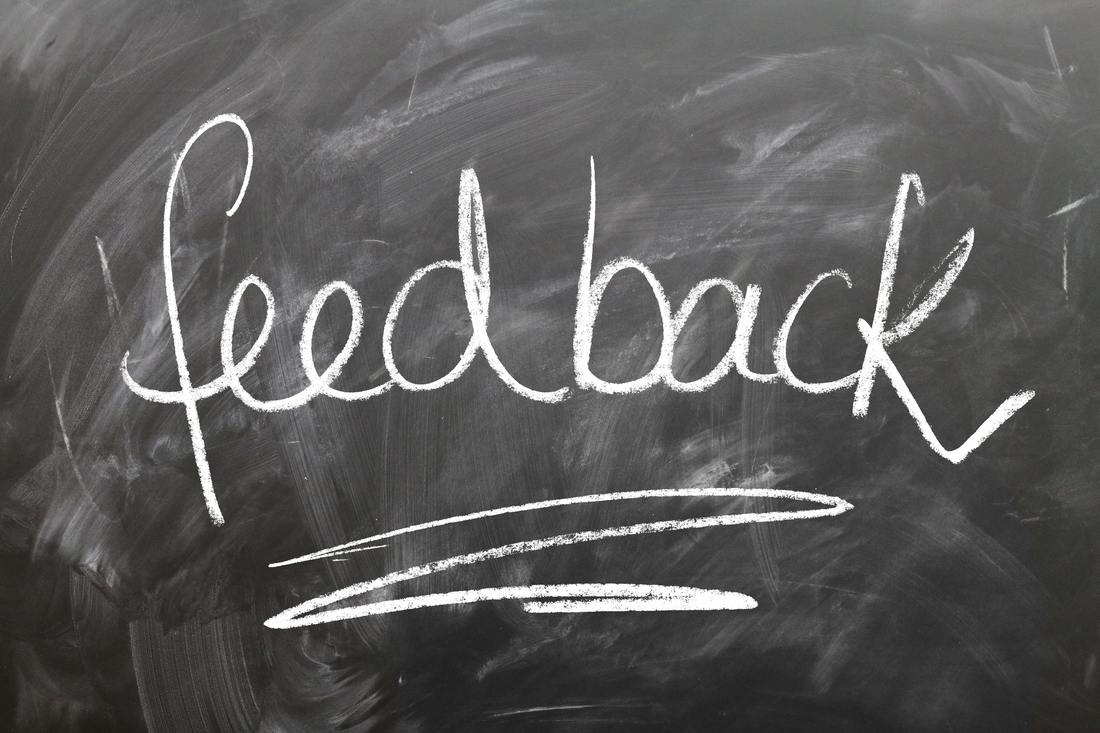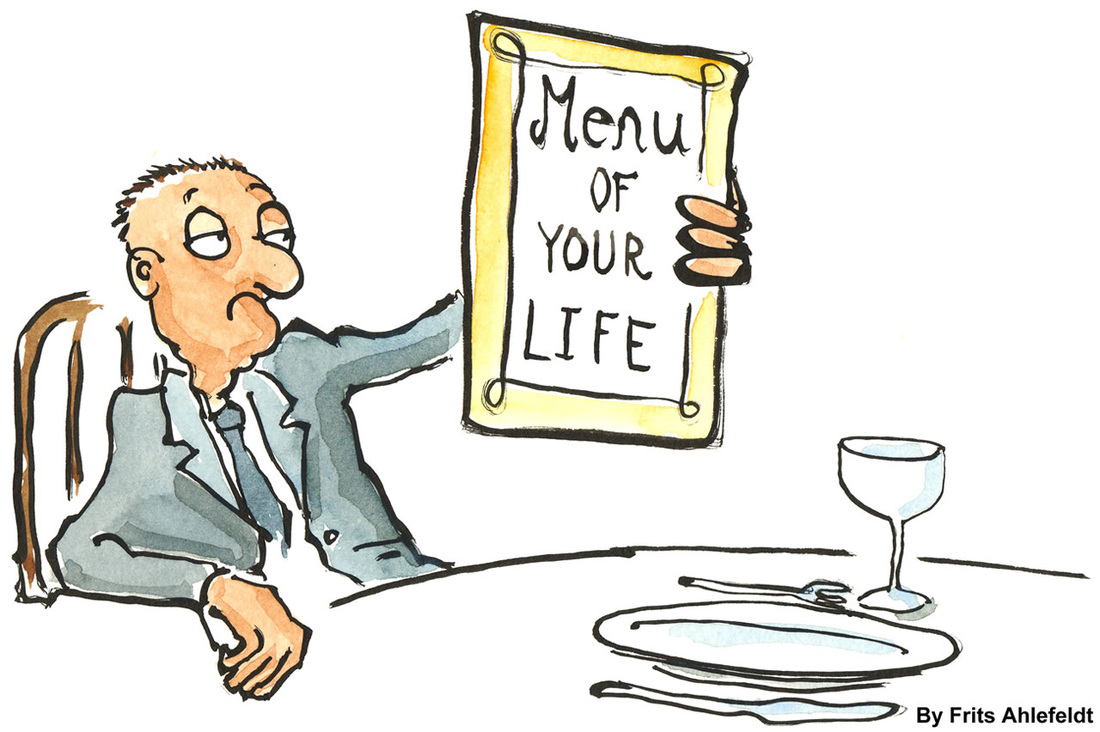|
I recently found myself at a smoothie place in circumstances that were less than ideal and in violation of recommended health and social distancing practices. I imagine there are others who have also found themselves in less-than-ideal social situations during this coronavirus era and faced a dilemma—what to do. Ultimately, I framed the situation in terms of boundaries, and it inspired me to write a few lines on asserting your boundaries in the untraversed context of a pandemic. Hopefully, my experience will be validating to some of you, and the few tips I bullet in the latter half of the post will be helpful with affirming and asserting your boundaries. At the smoothie place, I was waiting in line with about four other people, and I noticed that the two people making smoothies nearby were wearing masks as chin guards and talking to each other while they worked. I immediately thought of bodily-fluid particulates being expelled into the air and possibly landing on/getting transferred to my cup. This possibility was not alarming to me, but it was disquieting. Although I considered asking the employees to wear their masks, I decided not to because I felt uncomfortable making the request and didn’t want to be “difficult;” I told myself my smoothie would probably be fine and not contaminated. (It turned out there was a mistake on my credit card account and I needed to leave without a smoothie since I didn’t have cash on hand.) I later reflected on the situation and my choice not to request that they wear their masks. I would characterize myself as assertive, so what got in the way? Let’s break down what contributed to my reaction and lack of assertiveness to elucidate common factors that influence us and can make being assertive more challenging. When we are aware, we can be more intentional, and it’s easier to develop strategies to overcome specific hurdles. One of the most significant factors that interfered with asserting myself was uncertainty of the degree of risk in the situation. Was my concern of contracting the virus ridiculous? If I knew there was an absolute, appreciable risk in the situation, it would have been much easier for me to speak up. Knowing there’s much we don’t know about coronavirus, the lack of experience with pandemics, and the changing information about what are and aren’t recommended safety practices contribute to uncertainty. Uncertainty can pose challenges with decision making. Second, everyone else in line was having their smoothies made by the same people and they didn’t say anything. Not to mention, one of the people making smoothies was the manager, so it seemed this was the restaurant’s standard; everyone else seemed “totally cool” with the setup. Was I the only person who was uncomfortable with it? I fell prey to the natural human bias to conform. Lastly, I questioned if I was appraising the situation logically in the moment; I wasn’t sure if my reaction of being concerned about the nearby non-maskers was coming from irrational worry or was legitimate. When we’re already concerned about something, such as contracting or spreading coronavirus, it can skew how we process information, and we might question if our reaction is appropriate and objective—further complicating decision making. Add these together (along with being ravenous) and I balked. These factors—risk uncertainty, wanting to go along to get along, and questioning our reaction—can make determining our boundaries on-the-spot and the decisions we make more challenging. It can be easy to question yourself and not speak up. But that smoothie and cup were coming into contact with my body (or would have). That’s a significant boundary. Regardless of the reasons, I didn’t protect my boundary. Reframing the situation in terms of my boundaries helped to provide clarity. I’ve often said to clients, “If you don’t protect your boundaries, no one else is going to do it for you;” the same goes for me. Even writing this post, I have the urge to justify my boundary: stating that people are supposed to wear masks, providing scientific data regarding transmission in closed areas, etc. However, I don’t owe anyone an explanation as to why my boundaries are what they are. Neither do you. Someone else approving of your boundaries is not necessary, but someone else respecting them is necessary. Respecting your boundaries can only happen when you make choices to assert them, whether it’s asking someone to pull up their mask, choosing to walk away because there are more people in an area than you’re okay with, not going to a large dinner party, etc. It’s your responsibility to assert your boundaries. Some people might disagree with your boundaries, and that’s okay.  This brings us to how to assert your boundaries in the midst of the pandemic. At minimum, I implore for your boundaries to be consistent with current recommendations by authorities (they might not be perfect, but they are the best we have available). The following are a few strategies to help manage your boundaries in the era of COVID-19:
Remember that you do not owe anyone an explanation to justify your boundaries; a simple “I’m not comfortable with x” is an adequate reason. If someone is pushy or challenges you, you can politely remind them that this is what is comfortable for you, and it’s okay if that’s different from what’s comfortable for them.
1 Comment
There seem to be many misconceptions about feelings. Learning about feelings isn’t something we’re often taught in school, even though they play a significant role in our lives. We generally don't talk much in casual conversation about how we experience our feelings or the beliefs we have surrounding feelings. However, we receive plenty of messages about feelings in our culture, some of which aren't accurate or helpful. Ergo, here's a list of eight truths about feelings. 1. A well-educated individual who practices in the field of psychology recently posted on LinkedIn that you can only have one emotion at a time; many others agreed. I’m sure we can all remember times when we felt both sad and angry simultaneously. Years ago, I went to Europe by myself to meet up with a friend from college. I was both exuberant and anxious at the same time. We can also have conflicting feelings simultaneously. Often, after the death of a very ill loved one, a caregiver will feel relief and sadness. We can feel more than one feeling at a time, more than two, etc. Sometimes this can be overwhelming or confusing. It's also normal. 2. Today I saw a sign that read, “How do you feel today?” Really, it’s much more accurate to ask, “How do you feel right now?” Our feelings often change many times throughout the day. Our feelings are not static; they are constantly in flux. Learning to be aware of your feelings and how they change can help you be more in tune with the reality of your life. Psychologist Rick Hanson has said "The brain is like Velcro for negative experiences and like Teflon for positive ones." Similarly, negative emotions can stand out more to us and have a greater impact than positive emotions. When we are aware of our feelings and how they change, we realize that "negative" feelings are often less permanent and more short-lived, even though we may attend to them more and "hang onto them" more. By being more aware of your feelings throughout the course of a day, you will have a more accurate appraisal of your experience. Instead of having a "bad day," you are more likely to recognize positive emotions and experiences as well as the negative emotions and experiences. 3. Years ago, I went to a seminar presented by a well-respected psychologist. Somewhat jokingly, he stated that there’s one emotion a therapist won’t say he or she feels: anger. It reminded me of another class I went to on anger, where the presenter seemingly was feeling angry after an incident transpired, a participant shared with the presenter and class that the presenter seemed angry, and the presenter vehemently objected. Anger is a normal and healthy emotion, yet it seems feeling angry can be taboo, particularly for women. It might be more accurate to say our society tends to be more accepting of men feeling angry compared to feeling hurt or sad. Any feeling is "okay" to have; there are not "wrong" feelings. Any behavior or action as a result of certain feelings might not be healthy or constructive, but the feeling itself is okay. Everyone is entitled to their feelings. 4. You are responsible for how you deal with your feelings—acting out on a feeling can have significant consequences. Discomfort, pain, and stress are part of life and we all need to "deal with it" in some way. Learning to cope in ways that are healthy and constructive is necessary for better quality of life and wellbeing. 5. Thoughts aren’t any “better” than feelings or vice versa; both thoughts and feelings are important. Marsha Linehan often discusses the wise mind, where the reasonable or logical mind and emotional mind overlap; this is the integration of thoughts and feelings. 6. Feelings have value and utility. When we have strong feelings, they are telling us something: what we enjoy, what we want, what we don’t want, what we need, what we think is “wrong,” what we think is “right,” etc. Feelings might not always be an accurate reflection of the reality of a situation, but they are important indicators of what is going on for us internally, our personal codes of conduct or ideals, and what we perceive is happening in our world. Feelings can have great value in helping us see where we are and where we want to be (or don't want to be). 7. Sometimes we understand why we feel a certain way, other times, our feelings might not make sense to us at all; this is normal! Often, with some time, thought, and talking with others, we are able to develop insight as to why we feel how we feel. Generally, the stronger the feeling and the more it impacts us, the more important it is to understand what the feeling is telling us. Once we understand our emotional reaction, we can better evaluate how to cope or respond to the triggering situation.
8. We are not always aware of the feelings we have. Often, people have much difficulty identifying feelings when they have them. There is actually a word for having a limited emotional vocabulary: alexithymia. Since there are so many feelings, simply remembering the basic mad, sad, glad, or anxious can make it easier to identify feelings. A study by Dr. Michelle Craske at UCLA looked at people who were phobic of spiders, evaluating coping methods when the participants were exposed to the spider. The group that labelled their emotions during exposure to the spider experienced less physiological reactivity, meaning they had a less severe stress response. Being aware of your feelings, managing them, and being responsive to them are skills; they can be learned. Practicing mindfulness facilitates developing these skills. Try not to judge your feelings or yourself for feelings you have; practice self-compassion, particularly being kind toward yourself and not critical. Be mindful of how you feel, aware and observing it in a non-judgmental way without over-identifying with the feeling or letting the feeling “consume” you. This will also allow space to choose how you respond to the feeling(s) with intention. Practicing mindfulness can be a powerful way to help be more aware of how you feel and facilitate being more intentional with how you respond to the feelings you experience. For many people, Valentine’s Day is a reminder of how single we are and what we don’t have. Starting mid-January, walking by the holiday section in the grocery store can trigger those “Ugh, this time of year” thoughts. Following are the announcements of exclusive couple events for V-day, ads for flowers, and eventually the day of the 14th. This isn’t eloquent, but: it can sorta suck.
We hear it all the time: eat well, get enough rest, exercise.
How often do we prioritize these self-care habits and give them the attention they are due? How often do the environments in our lives—and people—respect the boundaries we must assert to regularly eat healthy, sleep well, and exercise? Eating healthy, sleeping well, and exercising often come at the expense of other things our lives: working an extra hour, a social activity, a house that is constantly tidy, spending time with your significant other, time on social media, etc. Self-care will come last, or as it is convenient, unless you choose to put if first and work in other demands and responsibilities around it. At what point did it become okay to not feed yourself because of working? Go sleep deprived because of x, y, or z? Neglect your body and mental health because of a hectic schedule? There will always be life demands to interfere with taking care of yourself—if you let them! Ironically, by setting limits, learning how to say “No,” and making time for self-care, we show up in a more productive and constructive way for the demands in our life—and we’re able to enjoy them more. Quality of life starts with the basics. . As a life coach, I’m all about the positive aspects of life: enjoying it, being productive, feeling grateful, etc. At the same time, there is a place for feeling sad, angry, frustrated, etc. I’ve made it my mission to help people get the most out of their life, overcome the negatives, increase positives, meet their goals, and make the changes they need. At the same time, people need to know that it is okay to feel down sometimes. It is normal to feel angry sometimes. It is okay to have negative feelings and be in a “lull” at points. You do not need to feel happy all of the time. Part of being human is experiencing both happiness and sadness.
If it is normal to feel sad, angry, etc—and it is “okay,” then how do you know when feeling those feelings are part of the typical negative feelings that accompany life versus something that need more attention? When do negative feelings cross over from experiencing them as a healthy part of the human condition to not serving you and benefiting from an adjustment? How do you know you’re feelings aren’t a flag for getting extra help or learning new skills?
You’re allowed to have a few crappy weeks and be in a bad mood. It’s part of life. Of course, there are ways to make those weeks feel better, but do not pressure yourself by believing that you always have to be 90% in the best mood. Life is full of ups and downs. It’s okay to feel sad or angry. Embrace it. Cope with it. Learn from what those feelings are communicating. Pick yourself up by your bootstraps. Don’t pressure yourself by thinking you *need* to feel happy. Of course being happy feels better, but negative feelings can have as much value in our lives as positive feelings. Learn how to accept, express, cope, and work with your feelings—positive and negative—so they benefit you. When we start something—a relationship, a job, a project, anything—we typically do so with purpose and intention. As an example, I recently started Paragon Life Coaching LLC with the purpose of doing something I love and giving back. Since I’m doing life coaching as my career, it is also important that I am able to earn a sustainable income. After we start anything, we are "in" it. We experience it almost every day (or at least frequently), and we have a bidirectional relationship with it. A “bidirectional relationship” means that we do whatever we do with our something-we-started, and then there is a consequence, so we respond. We do whatever we do with our something, and we learn new info as a result, so our thoughts or conceptualization related to our something change. We influence the something we are involved with, and that something influences how we continue to interact with it. I’m characterizing these aforementioned kinds of interactions as a bidirectional relationship, since influences go both ways. When we are “in” something, experiencing it regularly and interacting with it, even inundated by it sometimes, it is easy to lose that perspective we had at the beginning. It is very easy to lose objectivity. We are pushed and pulled by the experience. This is not good or bad, it just is. Without `truly engaging with what we are involved in, we wouldn’t learn, we wouldn’t improve, we wouldn’t make progress, we wouldn’t revise, and we wouldn’t have the emotional rewards. At the same time, when we are “in” something, especially if we experience intense emotions or are unfamiliar with aspects of whatever we are “in,” we are vulnerable to losing sight of the big picture—why we started and what we want from it. It’s easy to get lost when we are finding our way in an unfamiliar maze or lose perspective when we are affected by deep feelings. For instance, with starting a life coaching business, I know psychology extremely well and am a skilled helper, so the work of helping people to create meaningful change in their lives is smooth sailing. It’s what I love. The business aspect of starting a business is foreign territory. I never even had a business 100 course. I am learning as I go, using the resources I find, experimenting, consulting with others who have business experience, watching webinars, etc. To continue with my example, I have absorbed info during the past few months from many sources and much of it has focused on scalability (growing your business, reaching thousands and thousands of people, etc). Almost every message about business pretty much boils down to scalability. Apparently, it’s the Holy Grail in business. I’ve been racking my brain the past couple of weeks about how I’m going to reach the people I’m going to help, how I can make enough money to sustain myself so I can do what I what I want to do—keep doing life coaching, how I’m going to reach the masses, how I can “scale” my business, how I can create successful webinars and pull in thousands of dollars... HOLD UP!!! I realized three days ago my thoughts: “how I’m going to reach the masses,” “how I can make thousands from webinars." I was trying to problem-solve when, in the midst, these thoughts sort of smacked me across the face (thankfully!). THOSE ARE NOT THE REASONS I STARTED! I had been a little brainwashed: this mega superstar life coach who wants to reach 1 million women, that ridiculously successful tech person who wants to reach 100,000 people to make incredible webinars, the dozens of authors for business publications of authority who preach scalability, several “how to make your first webinar and bring in 6 figures” webinars, etc. They had gotten to me. I had gotten lost in foreign territory.
First, I was surprised my attention was so easily swayed from my intention to the dogma of the business community. It happened over the course of several months, so it was slow. Slow things creep; they’re more difficult to see happening. However, being surprised was not my strongest feeling. I felt empowered: I was reconnected with my intention. My goal is not to make 6 figures (it would be nice, but it’s not what I want). My goal is not to reach 100,000 people. My goal is not to have a slew of webinars to choose from so I can be on the beach, hit a button, and remotely bring in thousands as I enjoy the surf. Knowing what you don’t want can be as important as knowing what you do want. It is way too easy once you are “in” something, to be swayed by what you are “in.” What do I want? I want to help individuals make meaningful changes in their lives—this is my passion, so this is my goal. I want to witness the impact of the change individuals make and I want to experience the fulfillment of being part of that step-by-step growth process; you don't get that by reaching 100,000 people. And, yes, I want to be able to support myself financially so I can make a career of doing that. Scalability is not my business; making gobs of money is not my intention. Personal interactions with people and deep change is my work. Can I add on some webinars, group coaching, and publications to better educate people? Of course! But it is not my main squeeze. So, when you step back, what do you want? What did you want when you started? How has that changed, if at all? I do not want my message to be misunderstood: it is okay to change what we want in the middle of being “in” something. Flexibility and being responsive to what we glean from interactions in a bidirectional relationship is important. However, we must change our path mindfully—we must do so with awareness and intention.  We all have our strengths and areas for improvement. We all have our needs (and wants). Any of these change, from minute to minute to time periods during our lifespan. Go after what you want. I fervently believe you should. At the same time, you will only best serve yourself when what you want complements what you need. If you’re pursuing what you want when it interferes with what you need, you will do yourself harm, and the benefit of what you want will be lost, likely replaced by pain, disappointment, wasted energy, etc. (This is not known fact; this is a hypothesis of mine. Challenge it, try it on with different scenarios, see if it fits. It has passed my tests so far. Let me know what you think.) If what you want is at odds with your current needs or where you are at this point, do not give up on your want! DO NOT! Is there another way to satisfy your want? Can you “backburner” your want until your want and needs are aligned? So much of life is timing. Very little in life requires the immediacy we often assign it. Know your needs: know what you need at this time in your life. Know what you want. Be aware enough to know the difference, smart enough to know which needs and wants align, and disciplined enough to choose to pursue those wants which complement your needs now. Even John Rampton, contributor to Forbes and Entrepreneur, recognizes in his recent article* that “discipline…is the most challenging part” of budgeting. All of the financial knowledge and expertise in the world will not help you manage your money if your thoughts and behavior get in the way. As a life coach, my expertise is clearly not with stocks, finance management, etc. My expertise gives you the tools and skills to foster discipline, excel with decision making, manipulate your environment so it is conducive to engaging in behaviors that move you closer to your goal, and develop thoughts in-the-moment that align with your goal—which any financial growth hinges upon.
Aside from teaching strategies and supporting skill development, a life coach collaborates with the client to develop an individualized behavior plan based on a specific budgeting or financial goal (not just “I’m going to save $x a day and not spend money on y”); a person’s success is highly contingent on a quality behavior plan. Clearly, if a person is having challenges with discipline, then adhering to a behavioral plan will likely be challenging, too. As a specialist in behavior, emotions, and cognition, I don’t just create any behavior plan, but I consider habits, motivation, challenges, lifestyle, strengths, and personality. Any behavior plan I develop is constructed in a collaborative nature, *realistic,* and designed specifically for the individual, which is how it can be effective—despite challenges. If financial management and adhering to a budget is a goal that you’ve had but consistently aren’t meeting, it might not mean that you have an unrealistic goal, but may indicate that you need something more to reach your goal. That “something more” is a skill set and approach that a competent life coach can provide. *"For a Debt-Free New Year Set a Budget and Stick to It" on Entrepreneur.com posted December 22, 2015 This is the third and last installment of a series of posts to better introduce myself, beyond my role as life coach. As I explained previously, this is a post with an interview-style structure.
What are your greatest strengths? I’m very compassionate and am skilled at understanding other people and perspective-taking. I am also good with evaluating situations, decision making, and problem solving. My knowledge-base in psychology and ability to apply what I know in novel situations for a certain outcome (two very different things) is also a strength. I’m resourceful and creative. I also have a keen sense of style/design. I’d like to think my sense of humor is a strength too. I've taken the VIA Survey of Character Strengths, and according to that assessment, these are my top 5 strengths: 1.) creativity, ingenuity, and originality 2.) judgment, critical thinking, and open-mindedness 3.) honesty, authenticity, and genuineness 4.) fairness, equity, and justice 5.) leadership. What are your greatest weaknesses? My messiness has been a weakness, but I’ve improved with that! Although I can be extremely self-disciplined, my motivation is something that I have to work with at times to make sure I do certain things. Although these are personally areas I work on, I think they benefit me professionally in so far as giving me an edge with helping clients who have the same points of improvement. So much of life hinges on motivation! Name 5 traits that you think describe yourself. I pretty much did this above. I think my friends would describe me as intelligent, straightforward, funny, outgoing, and caring. Now I need to ask them! If you weren’t a life coach or therapist, what would you be doing? I would probably either be working in the fashion industry or rehabilitating wild animals in Africa, India, or Asia. "It is very common for people to be aware of what they should do or need to do, but struggle with doing it." Ultimately, life coaching is about learning and developing. Whether you are developing yourself and your identity, learning new behaviors, developing new perspectives, or developing behaviors to reach a goal, engaging in growth requires you are aware and take the necessary steps to move forward.
It is very common for people to be aware of what they should do or need to do, but struggle with doing it. In this case, there is often a lack of knowledge about what specifically to do every day or in the moment to make a change in the given direction, a lack of skills necessary to make those specific changes, or a lack of motivation. A life coach can help with these hurdles. Even though a life coach can give a client tools and help with skill development and increasing motivation, growth relies on the client making the choices to take the steps to move forward. Noone will be successful with taking steps if he or she isn’t recognizing and accepting the challenges in the way and using strategies to overcome them. Learning requires much. Even though I am a life coach, I am obviously a person. I am highly driven by my perceptions and feelings (feelings are really the motivators of behavior; logic functions as a motivator only as much as the thoughts or outcomes are associated with value. Feelings are what give value). I am fortunate to have many “tools in my toolbox” to help me with life. However, if I refuse to see my own patterns, know my own traps, or ignore the flashing lights in front of me that should be signaling me to do something different, none of my “action” tools are going to help me. In other words, denying reality is not going to help me—or you—to move forward. Denying reality will leave you running in circles, thinking you might be making progress. Denying reality can feel really good in the short-term, but you’ll stay stuck where you are. Chances are, if you are trying to move forward, there’s a reason you don’t want to be where you are. Sometimes, the most difficult aspect of learning is accepting the hard truths, the ones that are painful, disappointing, or uncomfortable. For example, if you stay at the job where you are now (quite comfortably), there is no room to move up in the company and you will never be doing something you love (both which you value). Recognizing this and accepting it might bring a host of implications and uncomfortable feelings: uncertainty about what you would do if you stopped working in your current position; anxiety or apprehension about your employability, losing benefits, or a potential decrease in salary; disappointment because you really enjoy your current colleagues; and overwhelmed because it might mean relocating, which you really don’t want to do. In this scenario, in the short-term, it can be easier to ignore the fact that you don’t enjoy what you’re doing and there’s no potential for upward movement. In the long-term, denying those aspects are going to keep you stuck in a position that is ultimately not satisfying until something else happens to motivate you to change. Accepting reality and taking action—which can mean confronting uncomfortable feelings and disappointment—is the only thing that is going to move you closer to where you want to be. Depending, this can take much emotional strength and determination. Taking the plunge into aspects of reality that are loaded with uncomfortable feelings is anything but desirable. Not to mention, once you take that plunge, you need to be able to adjust your perspective and problem solve so you have hope and a plan to change those aspects you don’t want to move forward with you. Much of this entire process requires emotional intelligence, coping, mindfulness, decision making, perspective taking, problem solving, and self-discipline. You need to balance being cognizant of the past (likely why you do not want to continue as you have been, which is motivating), living in the present (being conscious of and intentional with choices, coping with feelings, focusing on the positives, using your tools), and occasionally reminding yourself how you want your future to be (which should be motivating). Clearly, learning is not easy. But, it can be very worth it. |
AuthorAshley Belsinger, M.S. Archives
August 2020
Categories |
|
Warehouse 210 210 West Grant Street Lancaster, PA 17603 |
PARAGON Life Coaching
It's time to build your best life
©2023 All Rights Reserved
It's time to build your best life
©2023 All Rights Reserved









 RSS Feed
RSS Feed